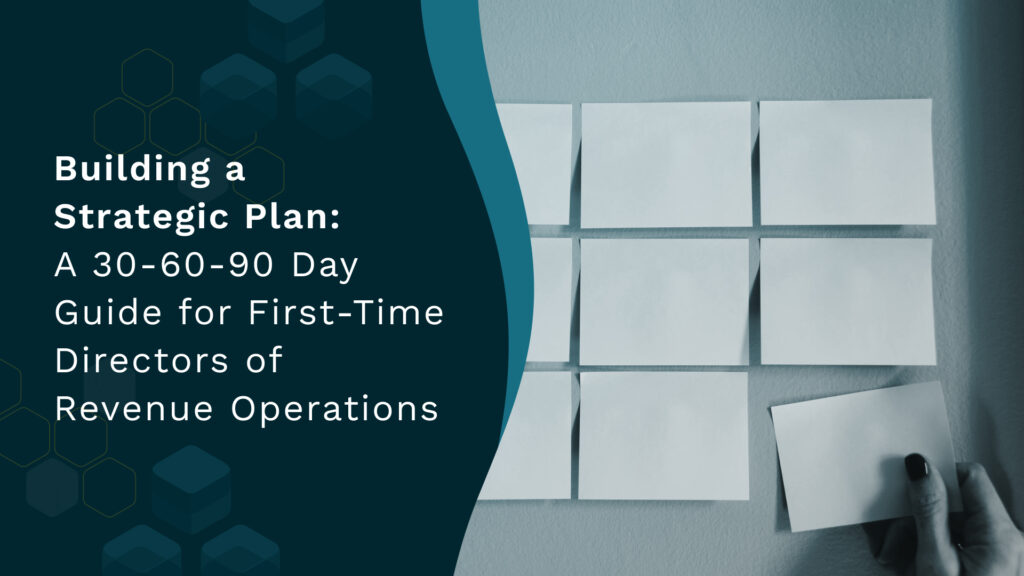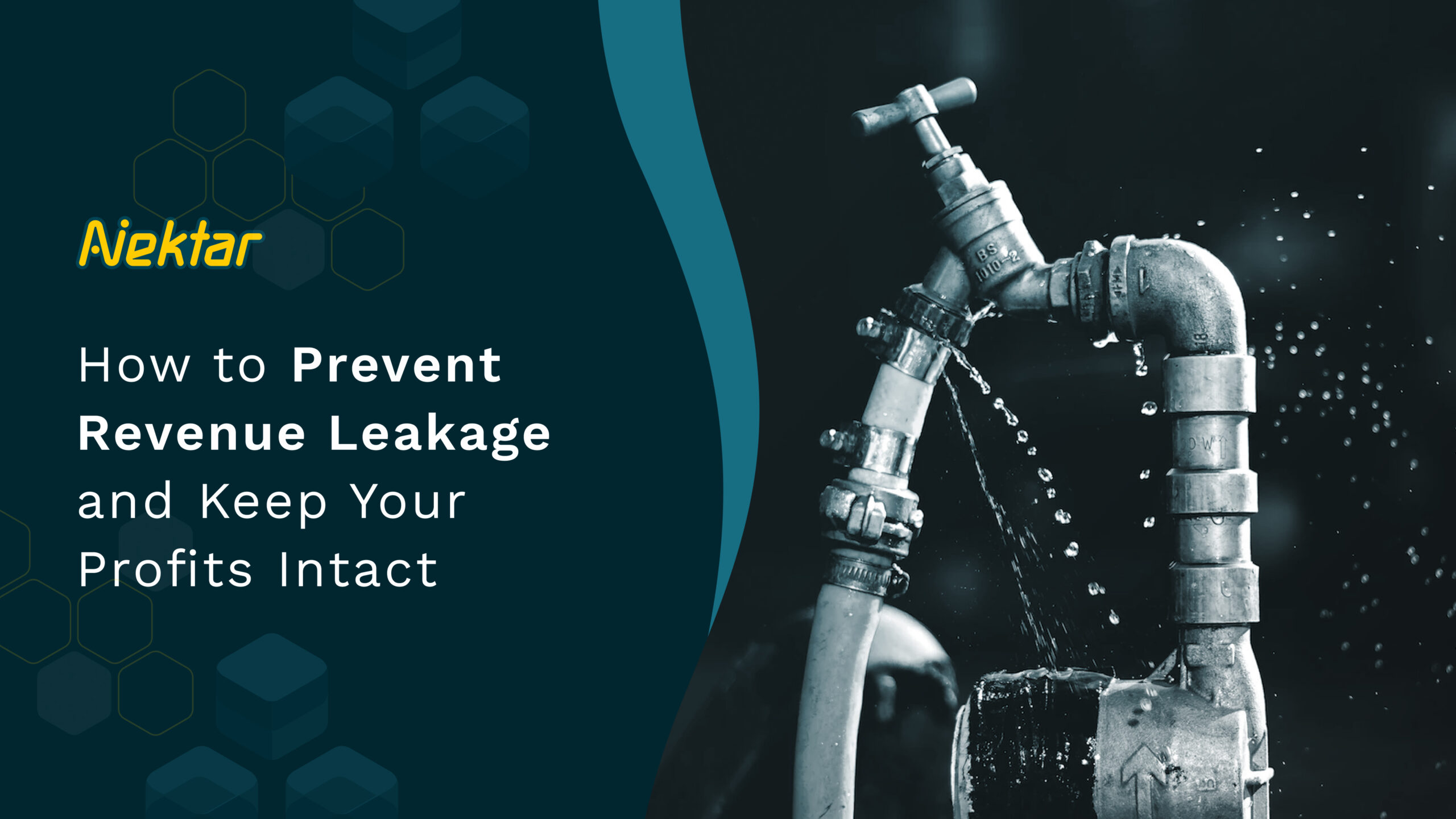
How to Prevent Revenue Leakage and Keep Your Profits Intact
Revenue leakage leaves considerable money on the business growth table. Read what is revenue leakage and how it occurs.
“A small leak will sink a great ship.”
Who knew a proverb by Benjamin Franklin would hold so true for today’s revenue teams? And perhaps become the very first revenue leakage definition?
Poor quality data, productivity issues, missed opportunities, cross-functional misalignment, or inefficient prospecting — Revenue Leakage leaves significant money on the business growth table.
But what is Revenue Leakage? And how does it translate to a whopping $2 trillion in lost revenue potential?
Let’s find out.
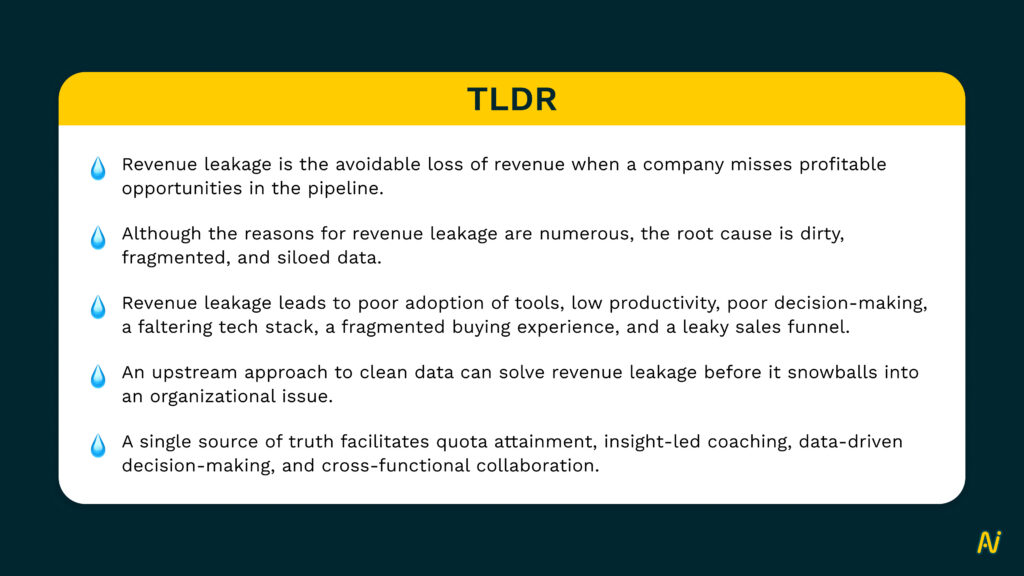
What is Revenue Leakage?
There’s no universally accepted revenue leakage definition. So we’ve gathered some of the best ones from experts.
The Atlantic offers a succinct, technical explanation:
Revenue leakage is the avoidable loss of revenue due to system failures in visibility, process, and execution.
The Atlantic
But what could these system failures look like?
Andy Hamer sheds some more light on the revenue leakage definition:
Revenue leakage is the unintended loss of revenue from a company due to various reasons such as poor reporting, inaccurate data entry, lack of sales discipline with discounts and service charges, lack of centralized records, and inaccurate invoices.
Andy Hamer, CRO & CMO, Gorilla Team Associates
Justin Schmitt, though, shares a different perspective. He points out other areas responsible for revenue leakage with this quirky example:
And if this is still all very complex to you, Rajesh Bhattad sums up what is revenue leakage in one powerful line:
Why Should You Care About Revenue Leakage?
Tech is a critical component in keeping the revenue engine running. To ensure operations go smoothly, companies make heavy investments in revtech.
In fact, by 2026, CRM is expected to create $1.6 trillion in new business revenue globally. That’s huge!
What’s troubling is that most companies are experiencing revenue leakage in some form.
2 more things are happening at the same time:
- Selling costs are increasing, and businesses are under increasing pressure to make every dollar count.
- The “funding winter” is here to stay as VC funding dries up. Macroeconomic events, particularly the economic downturn, are driving up the cost of capital.
As a result, venture capitalists are more conservative in their funding choices.
Today’s tightening economy makes it imperative to optimize investments more than ever before.
In scenarios like these, revenue leakage significantly impacts the bottom line. It gets you scrambling to curb growing expenses that could overshadow gains.
How Does Revenue Leakage Enter Your System?
Now that you know what revenue leakage means, you’ll also know it’s a force that hinders without being noticed.
So to help you spot it, we’ve listed down 6 reasons behind the leaks.
1. Critical Revenue Data Goes Missing
The Plot
Rep A reaches out to Buyer X (marketing manager) to pitch them your product. During this interaction, Rep A adds X to the CRM.
Later, X responds to the email by adding their boss, Buyer Y (CMO), to the discussion. Rep A schedules a call with X and Y. When the virtual meeting occurs, Buyer Z (IT head) joins too.
Rep A continues the conversation with X, assuming they’re the champion for this deal. Rep A also doesn’t add Y and Z to the CRM.
Was Buyer Y neglected by Rep A? Maybe.
Did buyer Z indicate sentiment that was not picked up by Rep A? Also possible.
Ultimately, it turns out that Y would have made a better champion for the deal. And Z is a key influencer on the buying committee.
However, no interaction with Rep A convinces Y and Z to pursue a competitor’s products—making this a deal that can be potentially missed.
What Is Revenue Leakage Here?
The quality of data your reps capture in the CRM forms the basis of all your revenue activities. But since most of that data relies on human input, it’s prone to significant errors.
More Manual Data Capture = More Errors = More Dirty Data
Dirty data adversely affects essential revenue functions like:
- GTM
- Segmentation
- Personalization
- Lead scoring
- Prospecting
- Ideal customer profile (ICP) planning.
For 95% of CRM users and stakeholders, data quality issues seriously impair their ability to leverage their CRM system fully.
Incomplete, inaccurate, and unreliable data results in missed opportunities to convert interested leads to winning deals.
2. Reps Give Tools the Cold Shoulder
The Plot
Your rep uses Tool A to record contact data in the system after each buyer interaction.
Now, you recently purchased a conversational intelligence Tool B for additional help. Tool B lets reps extract important insights from buyer conversations.
But these tools have their own dashboards. The rep must toggle between Tools A, B, and numerous others to get an overview of just one active deal.
Reps get frustrated and become a target of manual dependencies.
They start maintaining their own spreadsheets, entering data manually. This wastes time that could have been spent making calls or booking meetings.
What Is Revenue Leakage Here?
Spreadsheets and manual data entry are the biggest culprits of revenue leakage as they:
- Don’t integrate into the larger revenue tech stack
- Use up reps’ time which can be channeled into selling
Yet, reps continually go back to these familiar ways of recording data. That’s because they’re overwhelmed by the sheer number of tools they must use every day.
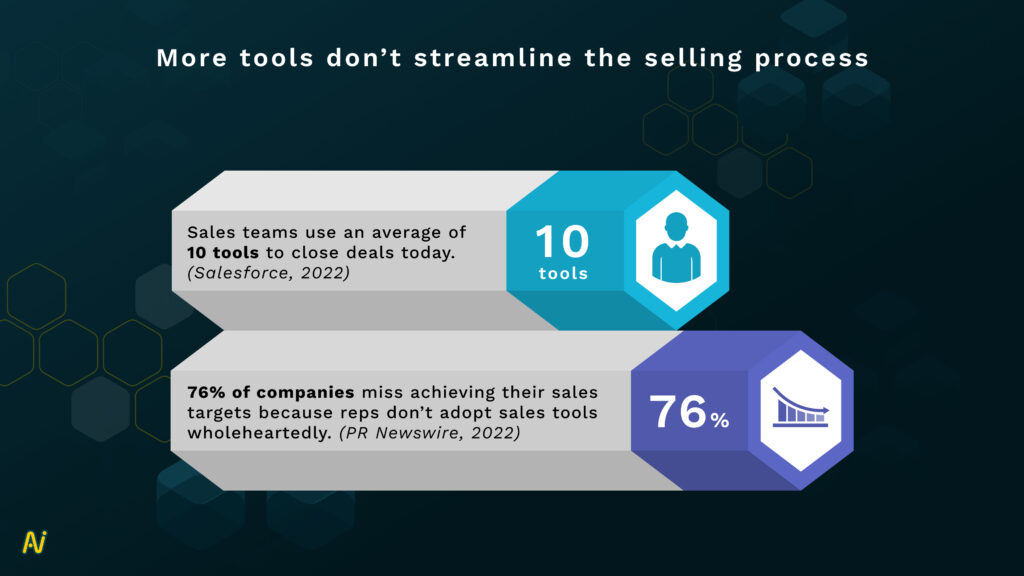
An added problem is that the organization or leadership often doesn’t set defined processes for using these tools, which confuses reps.
It’s no wonder, then, that they don’t want to adopt tools – directly affecting the bottom line.
While it’s easy to blame reps for not using tools, the problem begins at the top.
Whoever is thinking about what technology to prioritize (should) think more about – what does our business need, what do our people need, and how and what do we already have that we optimize through that technology. And then what do we need next?
Caroline Holt, VP of Revenue Training & Enablement, Bonterra
42% of managers say it’s clear which tool reps can use for a given task, but only 32% of reps agree.
If reps are confused, they perceive learning about new tools as tedious. Nothing can be done to stop them from reverting to conventional tools (decades old).
Ultimately, reps can’t use tools to plug revenue leakage and justify long-term impact because they don’t know how to:
- Use reports and analyze performance
- Figure out how a deal progresses
- Maximize a tool’s potential with its best use cases
3. Reps Are Lost Without Any Next Steps
The Plot
Rep A has an upcoming meeting with a highly profitable lead.
They must update the team (using available tools) on the meeting’s:
- Agenda
- Date
- Location
- Attendees
- Buyer’s role in the buyer organization
And other important details.
While doing all this, Rep A must also prepare for the sale because their previous deal went down badly.
Unfortunately, deal reviews didn’t offer Rep A any actionable insights. They didn’t receive any coaching with data-backed strategies, either.
Rep A is clueless about the next best steps for dealing with different buyer scenarios. Instead, they rely primarily on their gut (and poor experiences).
With little time to prepare and lacking confidence, Rep A messes up the new deal again.
What Is Revenue Leakage Here?
There are multiple reasons here for revenue leakage.
a. Selling is harder
For 69% of sales professionals, their job is more complex now.
That’s why they spend as much as 72% of their time on non-selling activities.
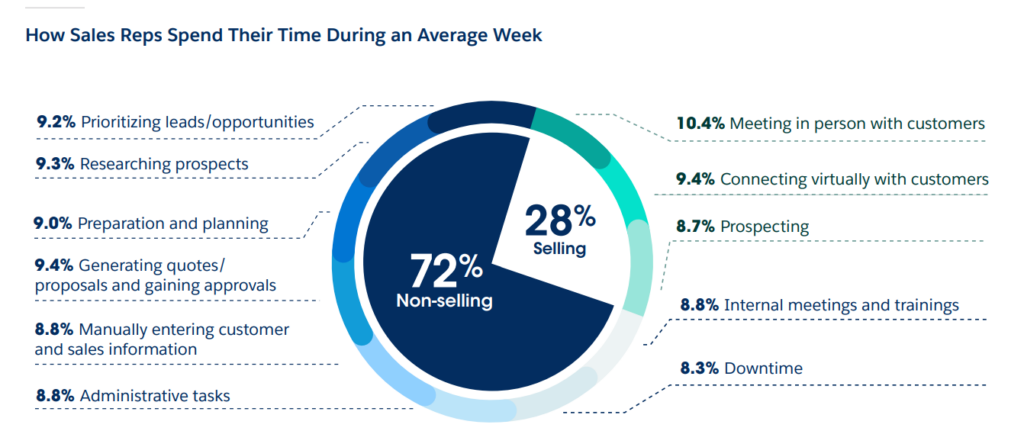
When reps are so heavily involved in non-selling activities, their enthusiasm for the job is naturally low. After all, they were hired to do what they love: selling.
b. Deal reviews are ineffective
Deal reviews lack data or science-based strategies for improving selling processes.
Reps don’t know how they can do better without effective deal reviews. They’re neither prepared nor focused on insights-led selling.
For 38% of sellers, inadequate coaching is a barrier to success at work.
They end up using lagging indicators (which rely on the past) and gut-based insights instead of leading indicators (predictive measures for future performance).
c. Quota attainment takes a hit
Buyers are pulling back due to supply chain, inflation, and other economic constraints.
As a result, only 28% of sales professionals were confident in hitting 100% of their quota in 2022.
Eventually, reps lose the motivation to perform well, making them less productive, which further affects targets.
Poor coaching, low rep engagement, unfavorable quota attainment, and long hours create a drag on productivity.
If sellers are disengaged or, worse, leave your organization, prospects, and existing customers could walk out with them – taking revenue away from you.
4. Tech Stack Fails to Function as a Revenue Engine
The Plot
The CRM is plagued with inaccuracies because of manual dependencies on reps to enter data, which snowballs into a cross-functional problem:
- Marketing continues modifying the ICP based on inaccurate data and invariably reaches out to the wrong buyers.
- Sales don’t get accurate reports on buyers. Based on this, they can’t tailor buyer interactions.
- Customer success can’t show customers how much ROI they’ve received from your solution.
The result? Poor decision-making and zero personalization.
What Is Revenue Leakage Here?

82% of Chief Sales Officers (CSOs) believe a strong sales tech stack is crucial for generating revenue and hitting sales targets. Yet, only 29% are content with what they currently have.
Typically, CRM is considered the cornerstone of a sales tech stack, with the power to make or break your revenue game.
So, low-quality and siloed data entering your CRM isn’t conducive to driving ROI from the entire tech stack.
Even experts warn against having poor data quality in the tech stack.
Adding to the problem, 70% of revenue leaders don’t trust the accuracy of their CRM data. And 85% of data leaders agree that making decisions based on dirty data costs the organization financially.
It’s safe to say more tools ≠ more revenue if you’re housing bad data.
On the contrary, a crowded tech stack can scatter data across disconnected systems. Quality data remains stuck in adjacent tools, of which 70% decays yearly.
To sum it up, bad data in disconnected tools produces low-quality insights and bad decisions, ultimately resulting in poor revenue.
5. Pop Goes the…Revenue Funnel
The Plot
Revenue teams work separately on their goals and systems. It all comes to a head when they sit down in team meetings and discover that each team (marketing, sales, and customer success) has its individual definitions and KPIs for a “won deal.”
Moreover, each team labels prospects as per their requirements. They also capture overlapping information within their respective systems.
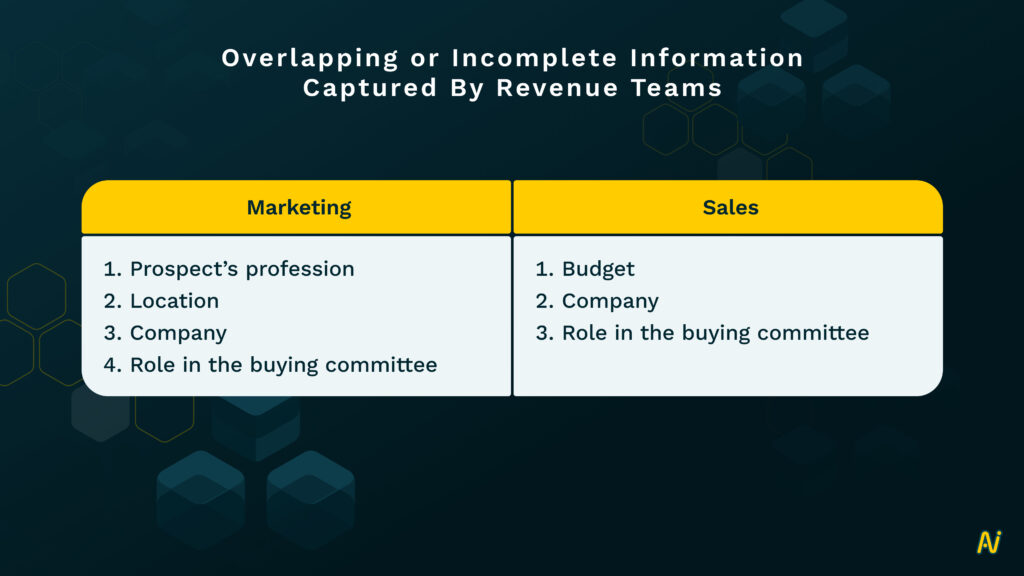
When it comes down to analyzing, leaders or managers must go through tons of repetitive, siloed, and non-compliant data. It puts them at risk of making wrong business decisions.
What Is Revenue Leakage Here?
Accurate data drives full-funnel visibility and helps extract actionable insights on business decisions across the buyer journey.
But when your data is caught in silos, you can’t:
- Share information seamlessly between revenue teams
- Spot emerging opportunities
- Discover weaknesses in your RevOps armor
- Make more accurate forecasts
An astonishing 75% of CRM users blame inadequate outreach driven by poor data for losing customers.
Without access to complete contact data, your customer success teams can’t figure out when an existing customer must renew their service or if they need additional tools.
Worse? It reduces your chances of cross-selling and upselling.
Issues like siloed and fragmented data can be traced back to a lack of solid data governance.
Data governance is the framework that aligns people, processes, and technology around ensuring quality data (accurate, complete, and relevant) in real-time.
Poorly governed data can lead to misalignment between teams, resulting in confusion and mistrust.
That’s why 47% of enterprises can’t consider the CRM a single source of truth for customer data.
Your RevOps team can suffer from a lack of data governance, causing problems in:
- Unifying siloed data and making data more searchable
- Uncovering hidden insights and driving data-backed decisions
- Ensuring scalability by minimizing data-related risks
- Increasing data’s value
One of the biggest data challenges that affect a revenue operations team is the lack of a data governance infrastructure. Because that really sets the groundwork for how you’ll build your systems, map integrations, how you’ll report on certain things. That’s your map.
Asia Corbett, Senior RevOps Manager, GTM, Bread Financial
Unfortunately, you could still easily overlook data governance’s crucial role:
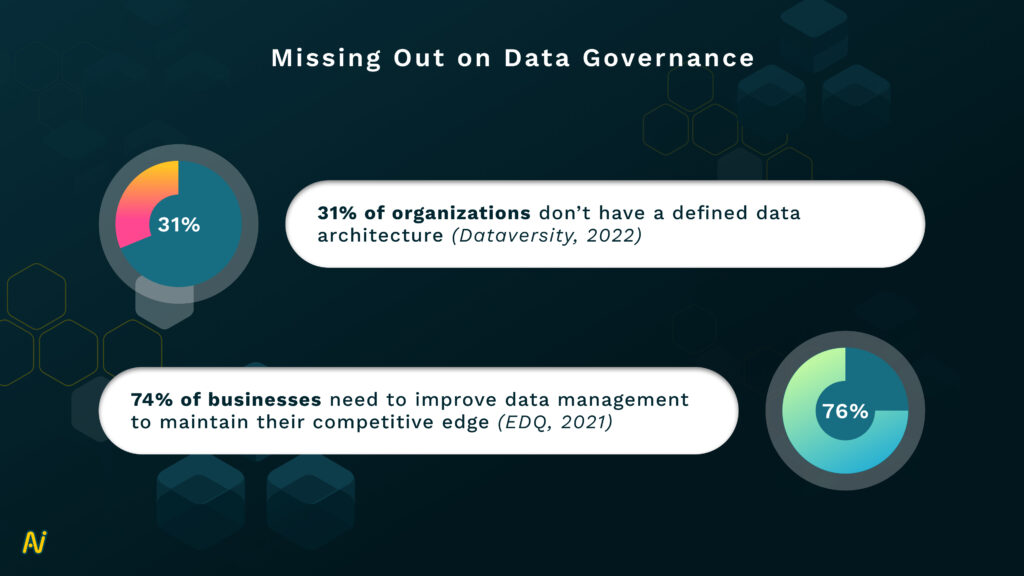
Data quality shouldn’t be an afterthought to plug in the revenue leaks. It should be at the very core of customer acquisition and retention strategies.
6. Show Me the Money in a Friction-Filled Buyer Journey
The Plot
Buyer X conducts extensive online research to learn more about your product. They contact Rep M (Marketing) when they’re prepared to purchase.
Rep M, who has no prior knowledge about the lead, does a preliminary check to determine whether it is a SQL and then passes it to Rep S (Sales).
Rep M updates their system to reflect this change.
Rep S, who follows a different system of record, gets in touch with X and asks similar questions to Rep M.
X isn’t pleased but sees merit in the product.
After winning the deal, Rep S passes on X to Rep C (Customer Success). Rep C follows their own system of record, asking X the same list of questions.
Buyer X is highly displeased with the fragmented buying experience and has to share the same information at all buying stages.
What Is Revenue Leakage Here?
The typical B2B buying committee comprises 6 to 10 people.
Each stakeholder is armed with different requirements and information, chasing specific definitions of value.
To understand how you can provide this value, each stakeholder wants to speak with multiple people at your end. It gives them a 360-degree evaluation of your company’s processes and offerings.

This buyer journey leaves behind useful data breadcrumbs. But to make the most of it, your revenue teams must be aligned at three key buyer touchpoints:
- Product awareness
- Information gathering
- Rep engagement
Much like assembling a multi-part pirate map that leads to buried treasure, the true power of alignment lies in discovering opportunities that could have been missed.
Limited pipeline visibility thwarts success.

Fragmented data sets across the RevOps tech stack hinder opportunities to:
- Provide an exceptional customer experience
- Prioritize accurately
- Effectively engage with buyers and provide relevant value to each stakeholder
Despite the CRM being a critical part of a revenue tech stack, 40% of businesses can’t use it to drive personalization in sales deals.
Ready scripts won’t cut it when dealing with informed buyers. Instead, your reps need to act as trusted advisors who offer guidance on which products deliver the best value.
When all teams across your organization use a shared CRM, they’re 14% more likely to create a personalized buying journey for each buyer.
What Can You Do About Revenue Leakage?
You can’t control macroeconomic situations that happen outside your organization. But you can control what happens within.
Begin by strengthening the foundation of your RevOps with clean data. And ensure it flows into the tech stack across marketing, sales, and customer success.
Make sure you have the right data and the right insights. Those are incredibly important because they tell you what’s working and what’s not. Having clean data and the right data strategy is very important. Figure out what is the right solution or offering that works for your business and invest there.
Rosalyn Santa Elena, Founder of The RevOps Collective
Here’s how you can go about creating a robust data strategy to combat revenue leakage:
- Start by gathering clean data. Unify data from various sources using future-ready methods
- Add validation checks to monitor and measure data quality
- Enable real-time visibility across the sales funnel
- Optimize top-of-the-funnel sales processes by simplifying and streamlining them
- Develop data-driven decision-making capabilities to improve ROI from existing tech
- Improve rep productivity with the right revenue tech stack and with zero pressure on reps to adopt multiple tools
- Incorporate an agile, central nervous system like Data+ for powerful data integration across silos
Instead of excessively cutting costs and hurting the quality of buyer-seller interactions, you can create a balance between cost and revenue through clean data.
Nektar helps you with an upstream approach to data, driving ROI on budgets of all sizes.
Find out how Data+ solves the revenue leakage problem. Talk to our data experts to learn how you can seal the leakages in your customer journey.
PUBLISHED BY

